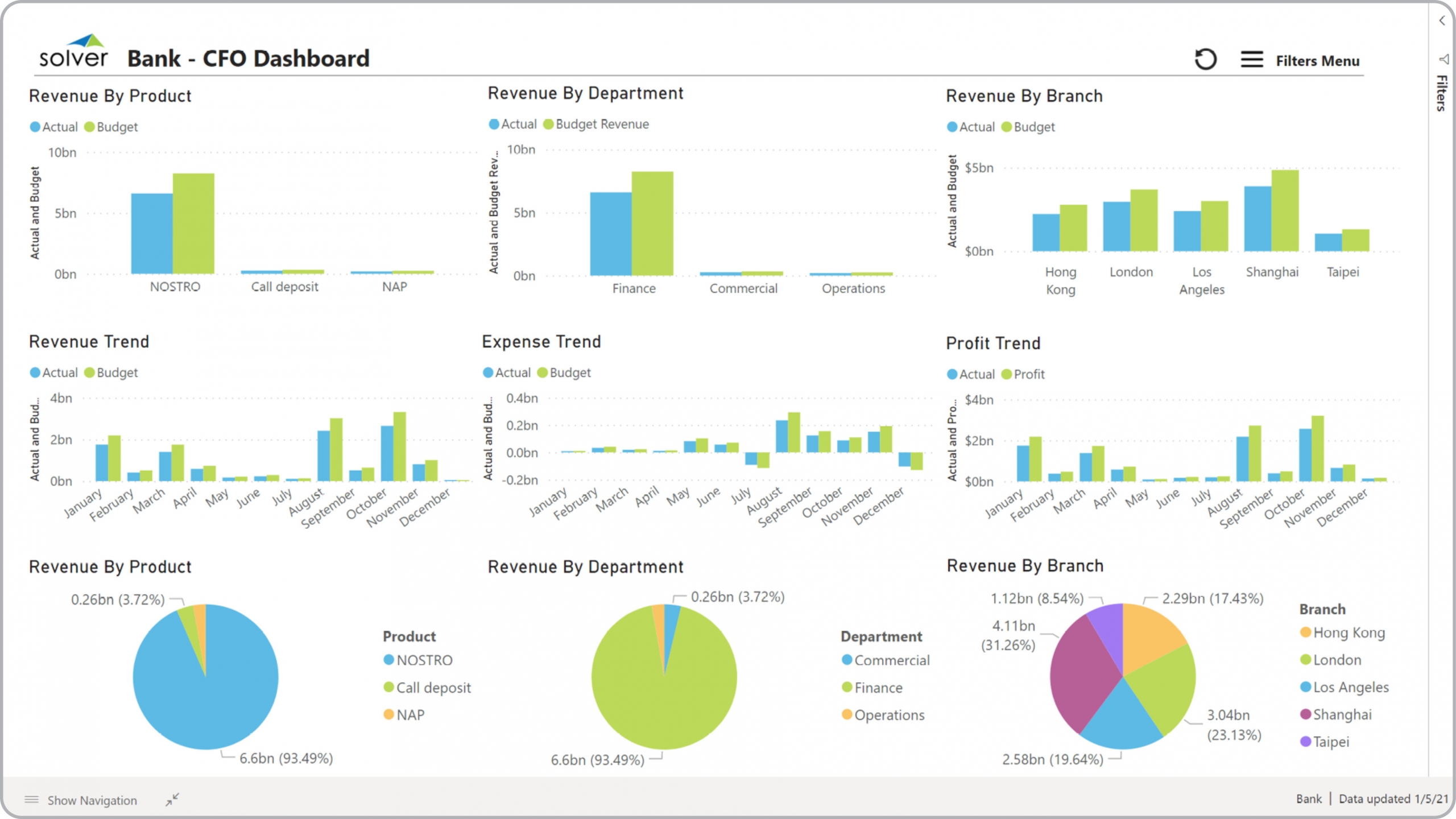Written by Nils R. | May 26, 2021 7:00:00 AM
What is a
CFO Dashboard for Banks
? CFO Dashboards are considered financial analysis tools and are used by CFOs and analysts to track trends and key performance metrics. Some of the main functionality in this type of dashboard is that it provides financial analysis from nine different perspectives: 1) Actual and budget revenue by product, 2) Monthly actual and budget revenue trend, 3) Revenue by comparison by product, 4) Actual and budget revenue by department, 5) Monthly actual and budget expense trend, 6) Revenue comparison by department, 7) Actual and budgeted revenue by branch, 8) Actual and budget monthly profit trend, and 9) Revenue comparison by branch. You find an example of this type of dashboards below.
Purpose of
CFO Dashboards Banks use CFO Dashboards to give financial executives a clear picture of KPIs that drives the health of the business. When used as part of good business practices in Financial Planning & Analysis (FP&A) departments, a company can improve its financial performance and speed up related operational decisions, and it can reduce the chances that top level metrics are missed during financial analysis.
Example of a
CFO Dashboard Here is an example of a CFO Dashboard with revenue, expense and profit trends and budget comparisons. [caption id="" align="alignnone" width="2560"]


- Native ERP report writers and query tools
- Spreadsheets (for example Microsoft Excel)
- Corporate Performance Management (CPM) tools (for example Solver)
- Dashboards (for example Microsoft Power BI and Tableau)
- View 100’s of reporting, consolidations, planning, budgeting, forecasting and dashboard examples here
- View a Bank industry white paper and other industry-specific information here
- See how reports are designed in a modern report writer using a cloud-connected Excel add-in writer
- Discover how the Solver CPM solution delivers financial and operational reporting
- Discover how the Solver CPM solution delivers planning, budgeting and forecasting
- Watch demo videos of reporting, planning and dashboards
